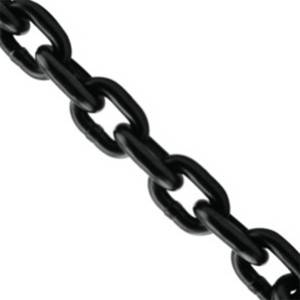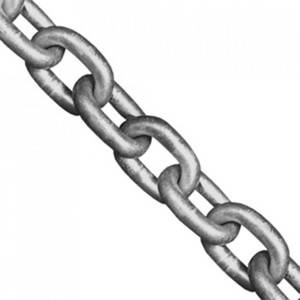Lifting chains and slings are critical components in all construction, manufacturing, mining, and offshore industries. Their performance hinges on material science and precise engineering. The chain grades of G80, G100, and G120 represent progressively higher strength categories, defined by their minimum tensile strength (in MPa) multiplied by 10:
- G80: 800 MPa minimum tensile strength
- G100: 1,000 MPa minimum tensile strength
- G120: 1,200 MPa minimum tensile strength
These grades adhere to international standards (e.g., ASME B30.9, ISO 1834, DIN EN818-2) and undergo strict inspection and testing to ensure reliability under dynamic loads, extreme temperatures, and corrosive environments .
Welding Protocols for Chain Integrity
• Pre-Weld Prep:
o Clean joint surfaces to remove oxides/contaminants.
o Pre-heat to 200°C (G100/G120) to prevent hydrogen cracking.
• Welding Methods:
o Laser Welding: For G120 chains (e.g., Al-Mg-Si alloys), double-sided welding creates fusion zones with H-shaped HAZ for uniform stress distribution.
o Hot Wire TIG: For boiler steel chains (e.g., 10Cr9Mo1VNb), multi-pass welding minimizes distortion.
• Critical Tip: Avoid geometric defects in HAZ – major crack initiation sites below 150°C.
Post-Weld Heat Treatment (PWHT) Parameters
|
Grade |
PWHT Temperature |
Hold Time |
Microstructural Change |
Property Improvement |
|
G80 |
550-600°C |
2-3 hours |
Tempered martensite |
Stress relief, +10% impact toughness |
|
G100 |
740-760°C |
2-4 hours |
Fine carbide dispersion |
15%↑ fatigue strength, uniform HAZ |
|
G120 |
760-780°C |
1-2 hours |
Inhibits M₂₃C₆ coarsening |
Prevents strength loss at high temp |
Caution: Exceeding 790°C causes carbide coarsening → strength/ductility loss.
Conclusion: Matching Chains Grade to Your Needs
- Choose G80 for cost-sensitive, non-corrosive static lifts.
- Specify G100 for corrosive/dynamic environments requiring balanced strength and durability.
- Opt for G120 in extreme conditions: high fatigue, abrasion, or precision critical lifts.
Final Note: Always prioritize certified chains with traceable heat treatments. Proper selection prevents catastrophic failures—material science is the backbone of lifting safety.
Post time: Jun-17-2025




